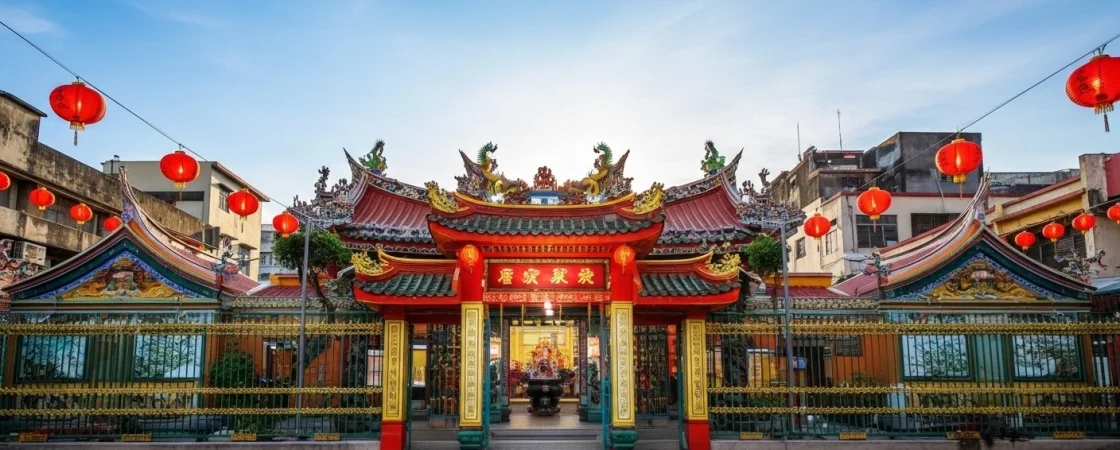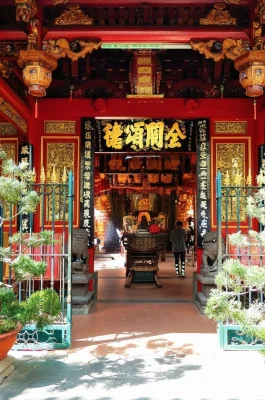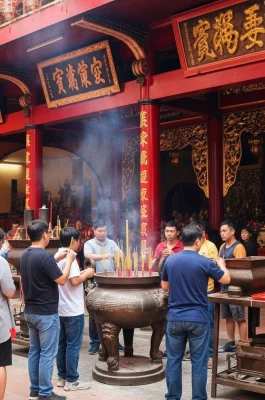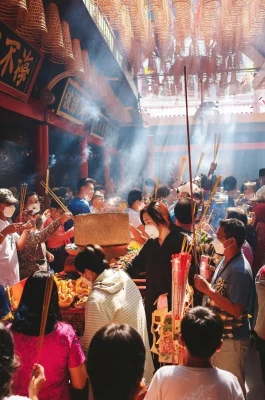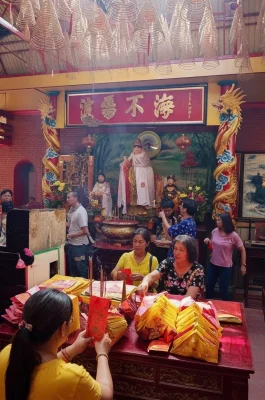A Cultural Time Capsule in Cholon
Nestled deep within Ho Chi Minh City’s bustling District 5, the Quan Am Pagoda (also known as On Lang Assembly Hall) is an essential stop in Cholon (Chinatown). Established as early as 1740 by Chinese immigrants from Fujian province, the pagoda is a living monument to the spiritual and cultural heritage of the Chinese community in Southern Vietnam. While initially a communal gathering place, it eventually became dedicated to Quan Âm (Guanyin), the Chinese Goddess of Mercy. It stands as a powerful reminder of the centuries-old cultural fusion that defines Saigon.
Fujian Architectural Masterpiece: The pagoda’s architecture is a feast for the eyes, showcasing the distinct Southern Chinese (Fujian) style. Its main structure is said to resemble a traditional Chinese dragon boat. Look up to admire the roof: the curved eaves are intricately adorned with detailed ceramic figures, often depicting scenes from famous Chinese operas and folk tales, and the roof ridges are capped with exquisite dragons and mythical creatures.
A Feast for the Senses: Step inside, and you’ll be enveloped in a cloud of fragrant smoke from the spiral incense coils hanging from the ceiling, a characteristic feature of Chinese temples. The air is thick with the scent of burning offerings and the sound of quiet chanting, providing an immediate and powerful sensory break from the city’s chaotic noise.
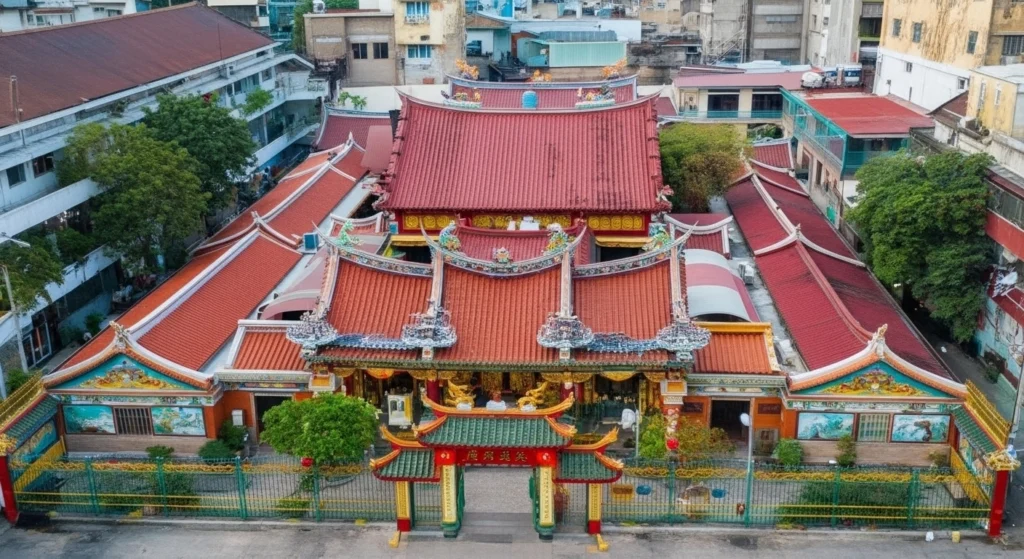
Unique Spiritual Practices & Visitor Information
Altar to the Goddess of Love: Beyond the main Quan Am altar, a distinct feature of this pagoda is the altar dedicated to Hoa Phan Phu Nhan (The Goddess of Beauty and Love). This makes the pagoda a popular destination for locals and travelers seeking blessings for their romantic lives, often involving a ritual with red threads and pre-threaded needles.
The Backyard Oasis: In contrast to the elaborate main hall, the pagoda features a small, tranquil rear courtyard and a charming artificial pond with a miniature island pavilion. Here, a statue of Quan Am stands on a lotus flower, offering a peaceful space for quiet reflection amidst the vibrant energy of Cholon.
Ancient Artifacts: The pagoda preserves historical treasures, including a large bronze bell cast in 1825, which serves as a tangible link to the pagoda’s deep history and the craftsmanship of the Qing dynasty era.
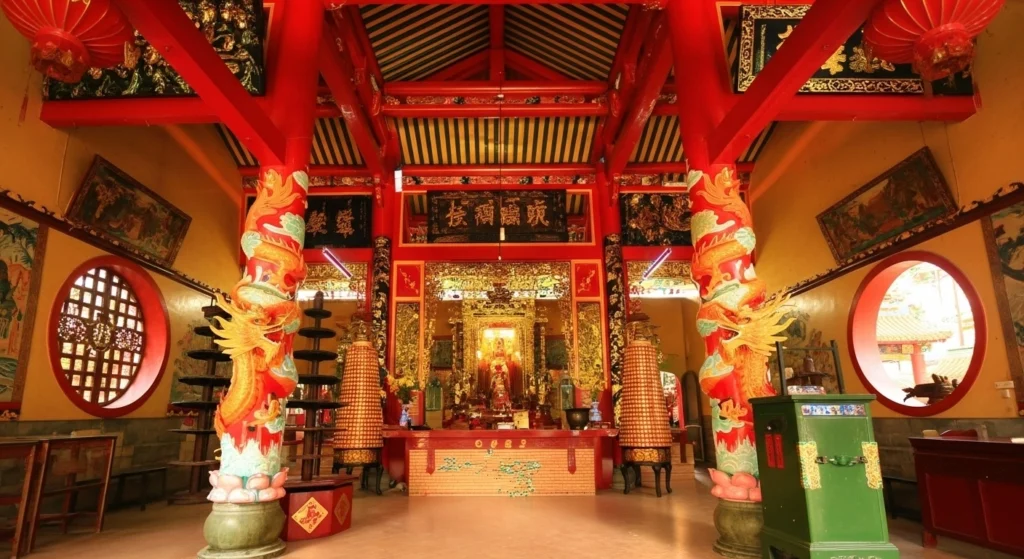
| Practical Information | Details |
|---|---|
| Address | 12 Lao Tu Street, Ward 11, District 5, Ho Chi Minh City (in Chinatown) |
| Entrance Fee | Free of Charge (Voluntary donations are appreciated for upkeep) |
| Opening Hours | Typically 6:00 AM – 5:00 PM daily (may open earlier on major Buddhist and Lunar Calendar days) |
| Contact | +84 28 3855 3543 |
| Experience Tip | Visit in the early morning to witness the serene atmosphere and local worship rituals. Dress modestly. |
